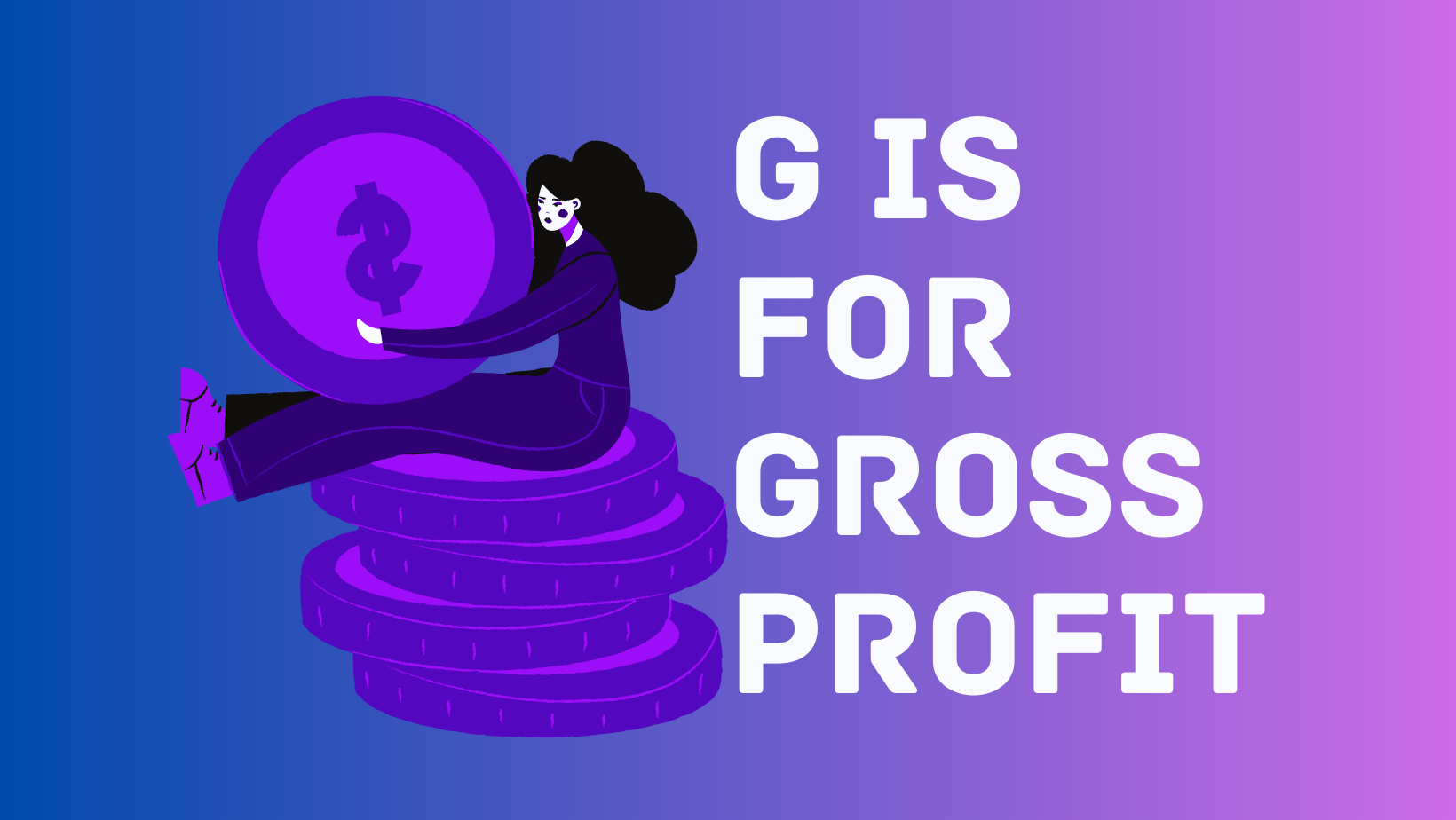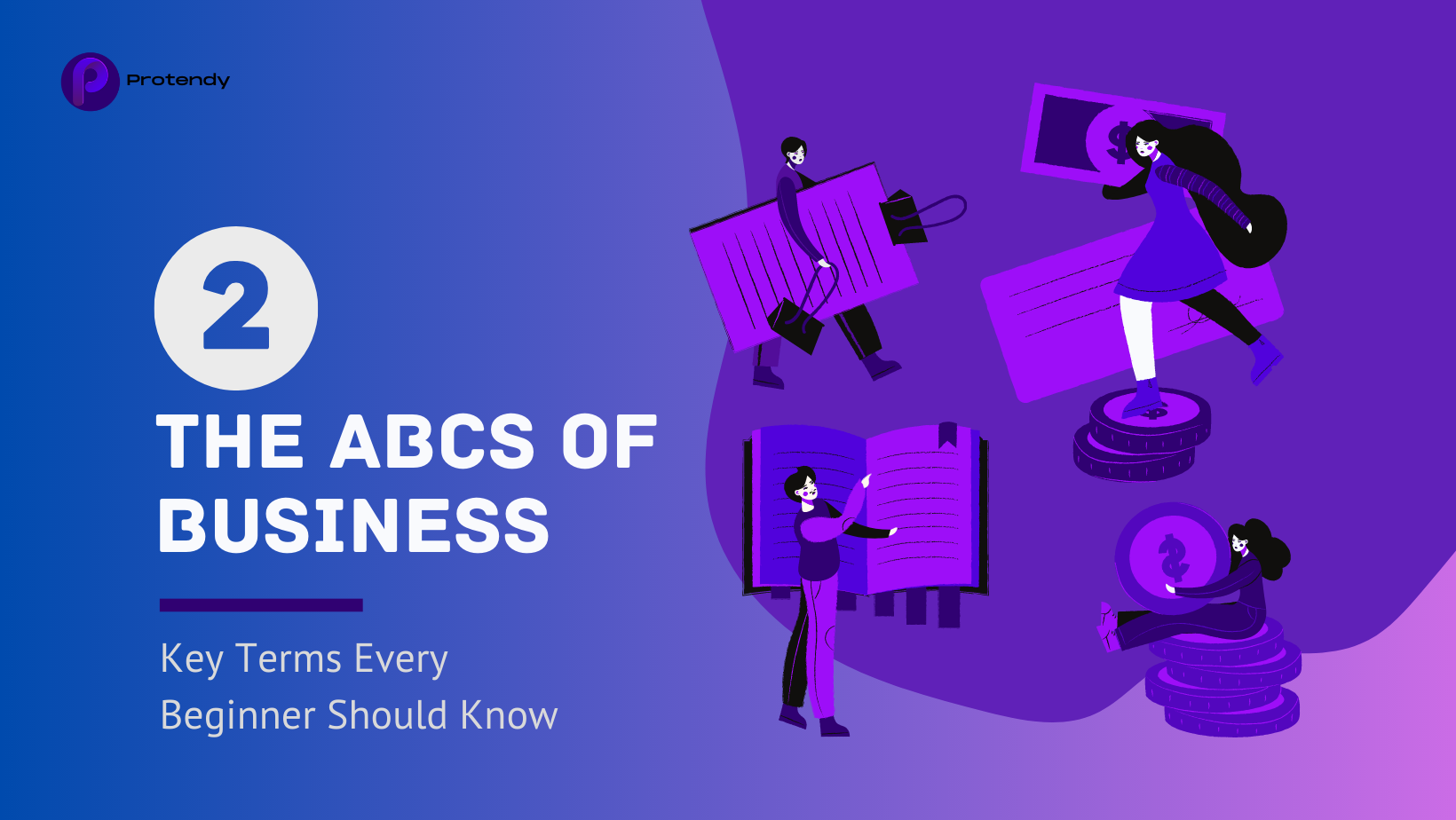Welcome back to the second instalment of Protendy’s Beginner-Level Business Education Series! We’re thrilled to continue our journey through the essential concepts that form the foundation of business knowledge. If you haven’t already explored Part 1 of the series “The ABCs of Business: Key Terms Every Beginner Should Know“, don’t worry—each section is designed to stand alone while contributing to your comprehensive understanding of the business world.
Why Learning These Key Terms Matters
Understanding business terms is like having a powerful decoder ring for the language of commerce. By grasping these fundamental concepts, you gain a valuable toolkit that empowers you to navigate the complexities of business transactions, financial decisions, and strategic planning. As you deepen your understanding of these key terms, you’ll develop the confidence to engage in discussions with industry experts, make informed choices, and build a solid foundation for your entrepreneurial journey.
What You’ll Learn
In Part 2 of our series, we’ll dive into an array of essential terms that every aspiring entrepreneur should know. From financial principles to human resources and marketing, we’ll explore each concept with clarity and real-life examples. By the end of this instalment, you’ll be equipped with valuable insights into debt management, equity financing, cost structures, profit analysis, HR functions, marketing strategies, and much more.
Let’s get started on our exploration of the key terms that define the world of business!
Table of Contents
ToggleD is for Debt: Definition of Debt and Its Role in Business Financing
Debt is a financial obligation or liability that a business assumes when it borrows money from external sources to finance its operations, expansion, or capital investments. Taking on debt can be a strategic move to access immediate funds and fuel growth, but it also introduces the responsibility of repaying the borrowed amount, often with interest.
Importance of Debt Management
Effectively managing debt is crucial for a business’s financial health. While debt can provide essential capital, excessive or mismanaged debt can lead to financial strain and hinder long-term growth. Understanding the terms of debt, interest rates, and repayment schedules is vital for making sound financial decisions.
Example of Debt Utilization:
Let’s consider an example of a tech startup looking to develop and launch a new software product. To fund the development and marketing costs, the company decides to take out a business loan from a bank. The loan amount is $50,000, with an interest rate of 5% per annum and a repayment term of five years.
The company’s debt management involves ensuring they have a solid plan to generate revenue from the software product to cover the loan payments while sustaining business operations.

E is for Equity: Definition of Equity and Its Significance in Business Ownership
Equity represents the ownership interest or claim that individuals or shareholders have in a business. It’s the residual interest in the company’s assets after deducting liabilities. Equity holders, such as business owners or shareholders, have a stake in the company’s success and, in turn, share in its profits.
Equity Financing and Capital Raising:
Equity financing is a method of raising capital for a business by selling ownership shares (stock) to investors in exchange for funds. This type of financing allows companies to access capital without incurring debt. However, it means sharing ownership and potential profits with investors.
Example of Equity in Action:
Suppose a startup needs $100,000 to expand its production capacity and launch in new markets. Instead of taking on debt, the company decides to raise equity capital by selling 25% ownership in the business to investors. In return, the company receives the $100,000 it needs to grow while the investors become part-owners of the business.
F is for Fixed Costs and Variable Costs
In the world of business, understanding the distinction between fixed costs and variable costs is crucial for effective financial planning and decision-making. Let’s dive into these two key cost components and explore how they impact a company’s financial health.
Fixed costs, as the name suggests, are expenses that remain constant regardless of the level of production or sales. These costs are independent of the volume of goods or services produced. Examples of fixed costs include rent, insurance premiums, salaries of full-time employees, and property taxes. No matter how much or how little a business produces, these expenses persist.
Fixed costs provide businesses with a degree of predictability in budgeting and financial planning. Companies must cover these expenses to maintain their operations, irrespective of fluctuations in sales or demand.
On the other hand, variable costs are directly tied to the volume of production or sales. As the level of production or sales increases, variable costs rise accordingly. Examples of variable costs include raw materials, direct labor wages, production supplies, and sales commissions.
Variable costs give businesses flexibility in their expenses, as they fluctuate with changes in production levels. If production decreases, variable costs decrease, helping to reduce expenses during slower periods.
Understanding Cost Structures:
An essential aspect of managing a business involves analyzing the relationship between fixed and variable costs to determine the company’s overall cost structure. The cost structure provides insights into the company’s break-even point—the level of sales at which total revenue equals total costs, resulting in neither profit nor loss.
Maintaining an optimal cost structure is vital for financial stability and long-term profitability. By identifying opportunities to control costs, businesses can enhance their competitive edge and improve their bottom line.
Strategies for Cost Management:
Effective cost management involves striking a balance between fixed and variable costs while optimizing efficiency and productivity. Businesses can implement various strategies to manage costs, such as renegotiating supplier contracts, investing in technology to streamline processes, and conducting regular cost-benefit analyses.
By evaluating cost drivers and seeking cost-saving opportunities, businesses can allocate resources more efficiently and invest in growth and innovation.
Fixed costs and variable costs are the yin and yang of a business’s financial landscape. While fixed costs provide stability and a baseline for financial planning, variable costs offer flexibility and adaptability to changing market conditions.
By understanding the interplay between fixed and variable costs, businesses can make informed decisions, set appropriate pricing strategies, and maintain financial resilience. As you continue your journey through the ABCs of Business, mastering these fundamental concepts will strengthen your foundation for success.
In the next section, we’ll explore “G is for Gross Profit and Net Profit,” unlocking the secrets behind profit analysis and financial performance. Stay tuned for more enlightening insights as we continue our Beginner-Level Business Education Series. Remember, at Protendy, we’re here to guide you every step of the way!

G is for Gross Profit and Net Profit
In the realm of business, understanding profit analysis is paramount to measure financial performance accurately. Two critical indicators of a company’s profitability are gross profit and net profit. Gross profit represents the revenue remaining after deducting the cost of goods sold (COGS). COGS includes all direct costs associated with producing goods or delivering services, such as raw materials, labor, and manufacturing expenses. Gross profit does not account for operating expenses like rent, utilities, and marketing. On the other hand, net profit is the final measure of a company’s profitability after deducting all expenses, including COGS and operating expenses, from total revenue. Net profit accounts for the full scope of costs incurred to run the business and provides a comprehensive view of its financial health. Both gross profit and net profit are crucial indicators for stakeholders, investors, and business owners to assess a company’s efficiency, effectiveness, and sustainability. By analyzing these metrics, businesses can identify areas for cost optimization, pricing adjustments, and strategic decision-making to drive profitability and long-term success. As you continue your journey through the ABCs of Business, mastering these essential profit concepts will empower you to make informed financial decisions and steer your business towards prosperity.
Congratulations on completing Part 2 of Protendy’s Beginner-Level Business Education Series! In this installment, we delved into key terms that form the backbone of sound financial management and decision-making. We explored the significance of understanding debt and equity financing, which play pivotal roles in business funding and ownership. Additionally, we covered the distinction between fixed costs and variable costs, shedding light on how these cost components impact a company’s financial structure.
By mastering these essential concepts, you’ve equipped yourself with the knowledge to make informed financial decisions, optimize cost management, and drive profitability for your business. Each term explored in this series contributes to a strong foundation in the world of business, helping you navigate with confidence on your entrepreneurial journey.
If you haven’t already done so, we encourage you to check out Part 1 of our series, “The ABCs of Business: Key Terms Every Beginner Should Know” In that blog post, we explored the importance of assets, the significance of the break-even point, and the critical role of cash flow in maintaining a healthy business.
Stay tuned for the upcoming sections of our Beginner-Level Business Education Series, where we’ll continue unraveling the mysteries of the business world. From marketing strategies to human resources and key performance indicators, each segment is designed to enrich your understanding and empower you on your quest for success.
Thank you for joining us on this educational journey. At Protendy, we are committed to supporting and guiding you every step of the way. Happy learning, and remember, the ABCs of business are the building blocks of prosperity!











